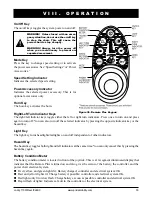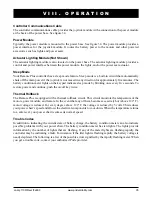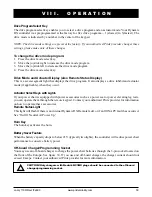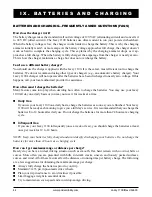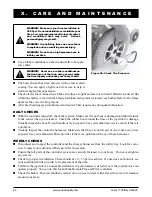
Jazzy 1100/RevJ/Feb03
www.pridemobility.com
45
I X . B A T T E R I E S A N D C H A R G I N G
What type of battery should I use?
We recommend deep-cycle batteries that are sealed and maintenance free. Both AGM and Gel-Cell are
deep-cycle batteries that are similar in performance.
Use these specifications to reorder deep-cycle batteries:
Why do my new batteries seem weak?
Deep-cycle batteries employ a much different chemical technology than that used in car batteries, nickel-
cadmium (nicads), or in other common battery types. Deep-cycle batteries are specifically designed to
provide power, drain down their charge, and then accept a relatively quick recharge. Lead acid batteries
should be charged as often as possible. They do not have a memory like nickel-cadmium batteries.
We work closely with our battery manufacturer to provide a battery that best suits your Jazzy 1100s spe-
cific demands. Fresh batteries arrive regularly at Pride and are promptly shipped with a full charge. During
shipping, the batteries encounter temperature extremes that may influence initial performance. Heat robs
the charge from the battery, and cold slows the power available and extends the time needed to recharge the
battery (just as with a car battery).
It might take a few days for the temperature of the battery to stabilize and adjust to its new ambient tem-
perature. More importantly, it takes a few charging cycles (a partial drainthen a full recharge) to estab-
lish the critical chemical balance that is essential to the batterys peak performance and long life. It is well
worth it to take the time to break in your battery properly.
NOTE: The useful life of a battery is quite often a reflection of the care it receives.
Battery Specifications
Type:
Deep-cycle sealed lead-acid or gel cell
Size:
Group 24
Voltage:
12 volts each
Amperage:
70 - 80 amp hours
Size:
NF-22 (power seat option only)
Voltage:
12 volts each
Amperage:
45 - 55 amp hours
WARNING! Corrosive chemicals contained in batteries. Use only AGM or Gel-Cell batter-
ies to reduce the risk of leakage or explosive conditions.



